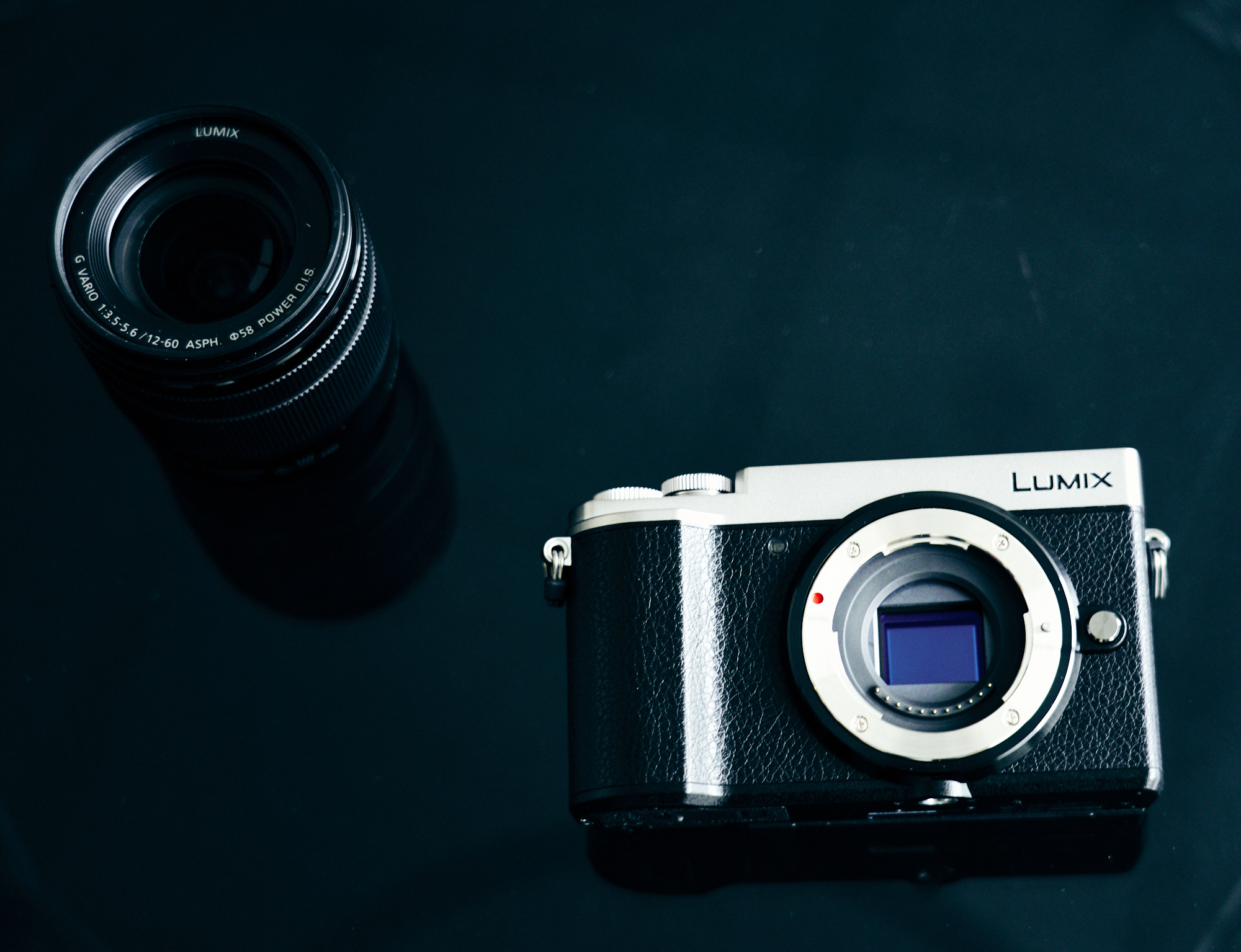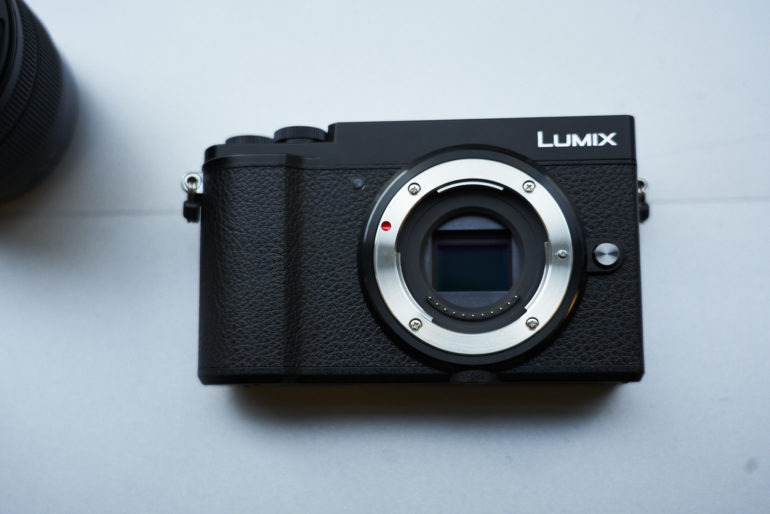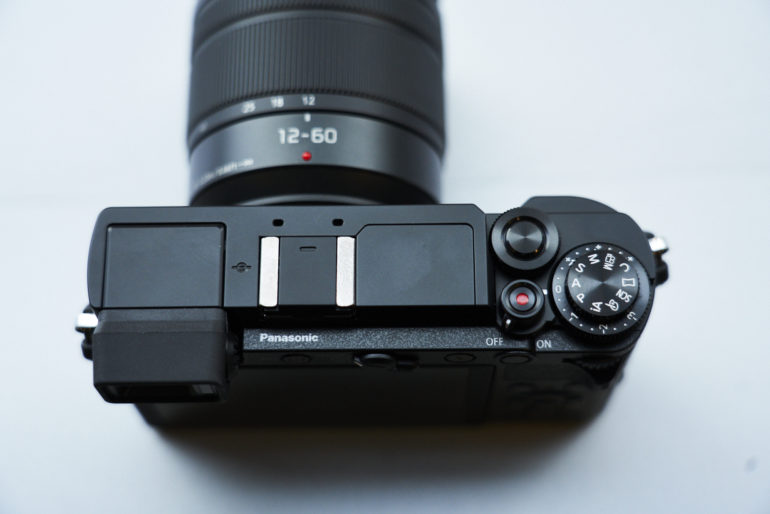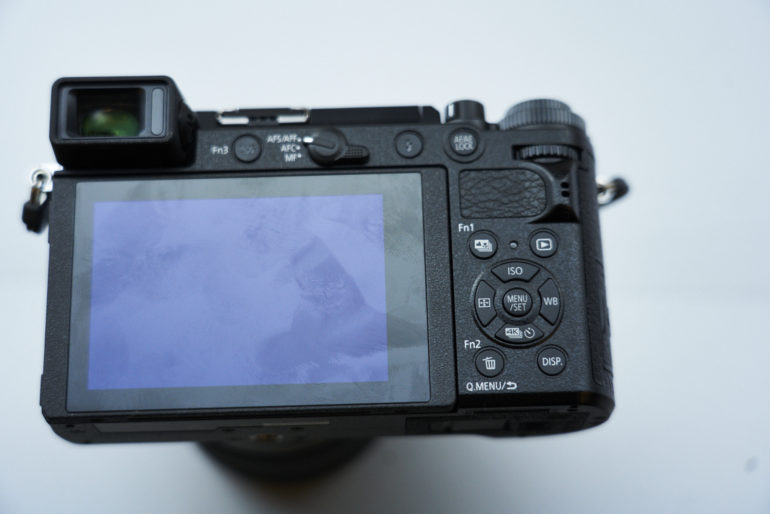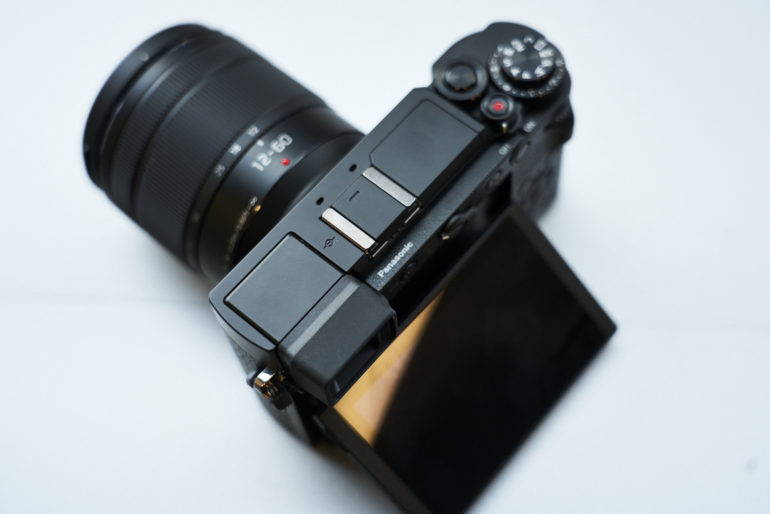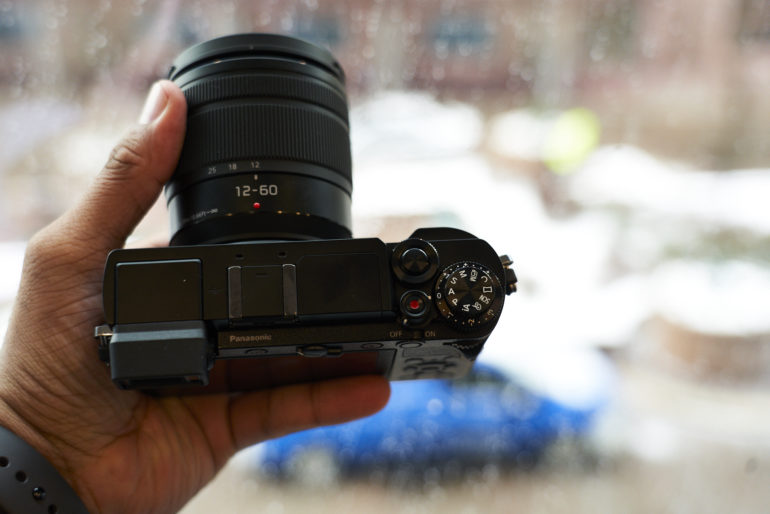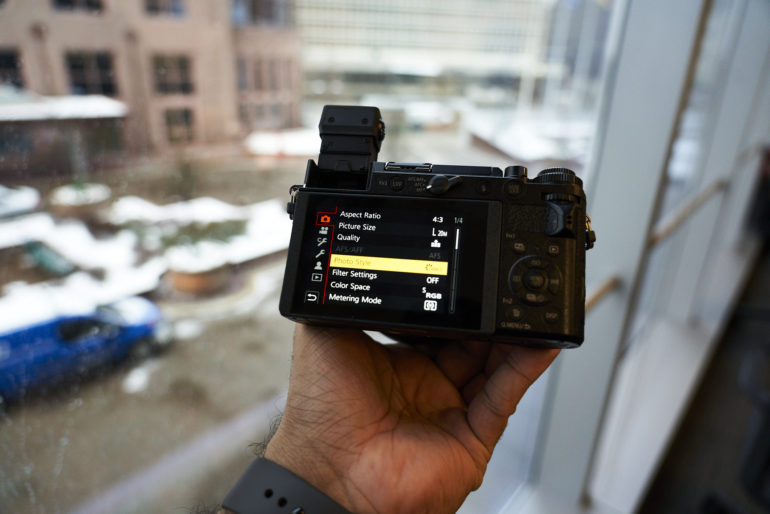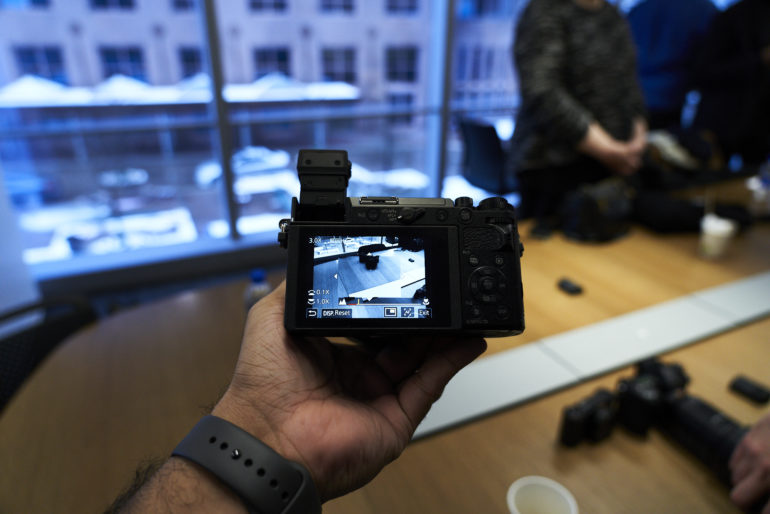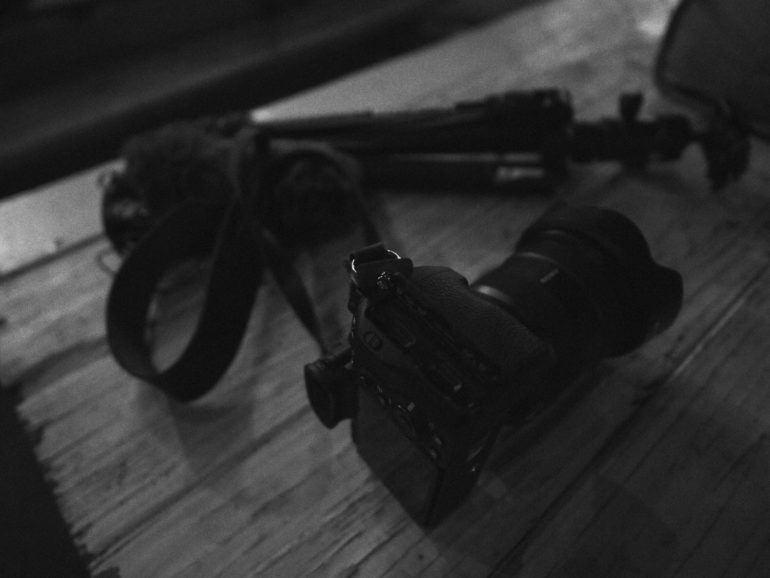Last Updated on 02/13/2018 by Mark Beckenbach
There seems to be a lot of promise with the new Panasonic GX9.
Not long ago, rumors abounded on the web of the Panasonic GX9–and admittedly when I was called into Panasonic’s headquarters to see the camera, I didn’t honestly think that I should really believe it to be anything seriously cool at all. But if I’ve learned anything in this industry, I can be pretty difficult on entry level products, and that’s sort of what the Panasonic GX9 seems like in some ways, or at least as it seems targeted to the mid-range consumer. In fact, one of the absolute biggest pushes for the camera has to do not only with the ergonomic changes, but they seem to be taking a page out of Olympus’ book with the Olympus Pen F and their Monochrome mode that delivered images I couldn’t get enough of.
The Panasonic GX9 has a brand new mode to it called L Monochrome D–and it’s loosely based off a certain film emulsion Panasonic would rather not fully and totally disclose publicly. But let’s just say it’s a film that’s seen a whole lot of use in the photojournalism world.
Tech Specs
- GX9: Very lightweight. 20.3MP sensor without a low pass filter. 20MP effective
- L Monochrome D: benefits for street photographers and true black and white lovers. Grain effect
- 4K photo functionality improved, auto marking feature. In camera sequence composition
- 5 axis in body stabilization
- Viewfinder from the GX85
- Power saving LVF mode
- Wifi, built in flash,
- Charges over USB
- Venus engine removes moire
- Reduces shutter shock by 90%. Minimizes shutter noise and unit size. It’s done via an electromagnetic drive. Still a focal plane shutter
- Fine tuned for better color
- L Monochrome D: Based off of a film look (perhaps based ooff Tri-x or ilford)
- Grain effect: Randomized grain effect, constantly randomized grain
- Tiltable viewfinder:
- Stacked dials, exposure compensation dial
- A rear thumb lip for grip and extra comfort
- Front and rear dials
- Power switch is on the top of the camera Record recessed onto the power switch
- It’s small, it feels like a Leica CL in some ways
- Tilt-able rear LCD 1.240k dot. It tilts up and down
- Touch enabled 100%, menus, touch to focus and all,
- 30fps burst shots at 4k photo
- Sequence composition lets you combine from 30 to 30 frames as an overlay. Multiple exposures.
- tracking performance is based on 3D movement of the entire image: Mostly works with Panasonic lenses
- This is the VENUS 10 engine (could be 9)
- Bluetooth 4.2
- Post focus. Focus stacking
- New type of port that is very, very different from everything else out there as far as the port door goes
- New sculpted grip
- Will come with a 12-60mm and wil retail at $999. Hand grip will be $59.99. eye piece is $19.99
Ergonomics
The Panasonic GX9 is one of the company’s rangefinder style cameras. For some odd reason, these styles of cameras haven’t done as well as their DSLR style camera bodies, but by the initial look at the Panasonic GX9 it seems like something both ergonomically simple to work with and nice to hold. The front of the camera is devoid of controls with the exception of the lens release.
Turn to the top of the Panasonic GX9 and you’ll see a whole lot going on here. The viewfinder is on the left–and it can flip up for use when you’d like it to. Then there is the hot shoe and the built in pop-up flash. Keep going further right and you’ll spot the on/off switch around the video record button, the exposure control wheel around the shutter button, the menu wheel, and the exposure compensation wheel. Panasonic was very specific about there being stacked dials. Initially, this all seems great but I can tell that in the long run, I’d want an ISO dial sort of like what the Fujifilm X Pro 2 has.
The back of the Panasonic GX9 has a tilting LCD screen that is fully touch capable. This screen dominates the back area and then there are buttons for various controls. By the thumb rest, there is another exposure control dial. Panasonic wanted to specifically bring our attention to this grip and said it was designed for really good ergonomic control. In truth, almost every camera manufacturer has this.
When the screen tilts, it goes both up and down–which is a nice touch. Get ready to use it above and below your head, sort of like a medium format camera with a hood finder.
Build Quality
The Panasonic GX9 doesn’t have Panasonic’s best weather sealing or durability ratings. In fact, Panasonic stated it has no weather sealing of any sort. We handled a prototype and so I can’t make any final judgements yet. But when holding it in my hand, I can fully attest that it feels like a pretty darned nice camera. The 12-60mm lens that is bundled with it though seems superfluous. The Panasonic GX9 begs to have a nice pancake prime on it or something along the lines of the company’s very good 15mm f1.7 lens.
In fact, when holding it, I almost get the same excitement that I originally got when the company’s GF1 was released. If you’ve been in the industry for awhile, you can remember how we all drooled over it.
Ease of Use
The Panasonic GX9 has a fair share of buttons, but it also has a fully touch capable LCD screen. Panasonic’s menu system has always been a mixed bag in my opinion–but it’s leaps and bounds easier to navigate than Sony’s or Olympus’. However, when my reps gave me a personalized brief tour of it, the menu systems seemed to show off a few different ways to get to something. That’s cool, but I can totally see how it can be confusing to some.
Here’s our video preview.
Autofocus
During our brief time with the camera (less than a half hour max) I found the autofocus with various lenses to be super fast. It can easily hold its own with Olympus and outpaces both Sony and Fujifilm. Of course, Panasonic’s fastest focusing only happens with certain lenses. Considering that they’re pitching this to street photographers, I’ll be really curious to see how they exactly go about it If the autofocus that I saw is as fast in real life situations, then we could have a new king of street photography cameras for sure.
I’ve always championed Micro Four Thirds for street photography due to the fact that the smaller sensor lets you get a subject in focus faster and have more of the frame in focus at a given aperture. Street isn’t about having a super blurry and blown out background at all.
Panasonic also claims it will be able to focus on the stars. That’s quite a claim!
Image Quality
While the Panasonic GX9 that was played with was a pre-production version, we got a few minutes to play with it with its final firmware before release. These images were shot in JPEG and have the L Monochrome D mode applied with standard grain. The images look really nice and if I had more time to play with it, I would have easily been able to create even better photos. These results though are getting me very excited for this camera.
First Impressions
I’m pretty pumped for the Panasonic GX9. It’s packing a lot of great autofocus algorithms, a tilting LCD screen, a tilting viewfinder, a touch screen, buttons that feel good, a new Venus engine, and of course that new L Monochrome D feature. Look out for it!


